Best guitar tuners 2025: chromatic, polyphonic, and strobe options
Find the best guitar tuner whatever your budget, with our top picks from the likes of Boss, Korg, TC Electronic and D’Addario
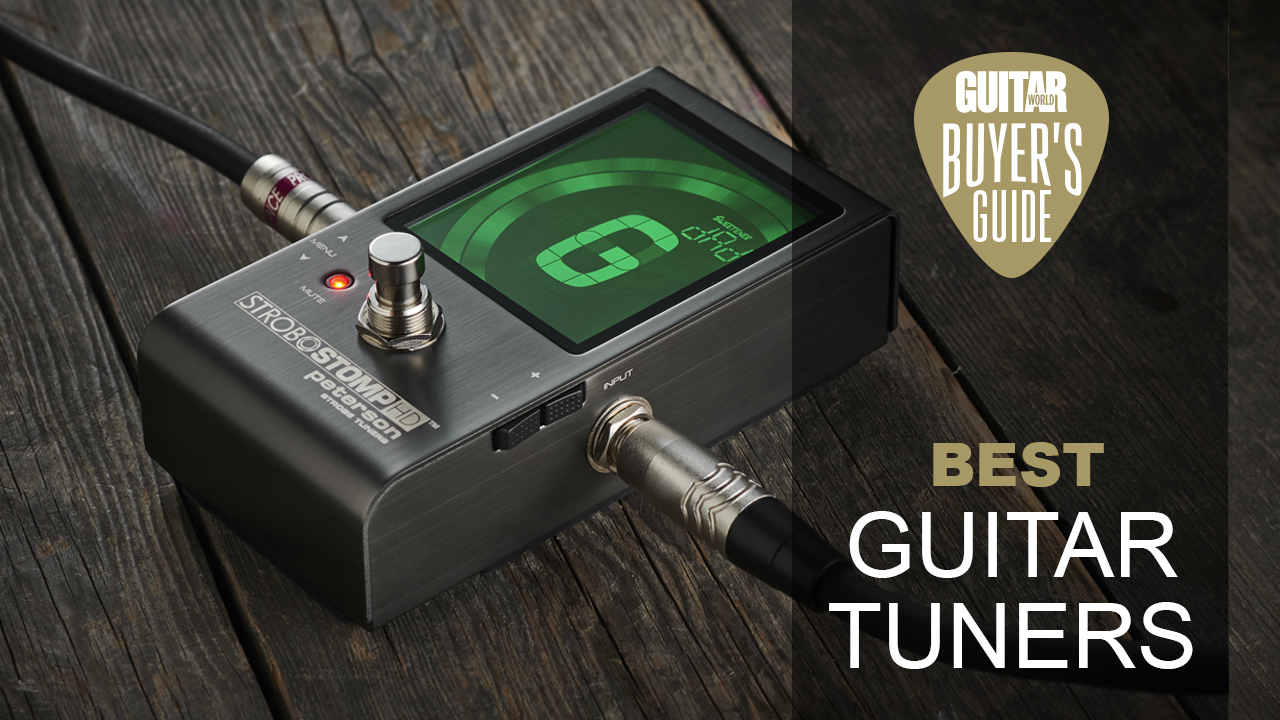
A good tuner should be the first purchase on any guitarist's list, even if it isn’t the most exciting thing you’ll ever buy. As well as being the first thing you need to use when you pick up your guitar, the best guitar tuners are first on any pedalboard, first in any recording signal chain, and unless you’re one of the 0.01% of humans with perfect pitch, you’re going to need one.
At Guitar World, our writing team has been recording, gigging, and practicing for decades so we’ve come across countless varieties of guitar tuners in our time. We’ve also reviewed many of the models on this list personally, testing them in all conditions to ensure they perform to the standards we’d expect from any of our gear. A good tuner needs to be durable, easy to use, as well as having an ultra-clear display to ensure it's viewable in any light conditions.
In 2024 there’s a myriad of choices available for guitar tuners, so to make things easier for you, we’ve separated our favorites into categories that will suit a wide variety of uses. Whether you’re a bassist who’s frustrated with your tuner being unable to read lower notes, or you’re a guitar tech looking for the best tuner to set intonation, there’s an option for you here. If you’re new to guitar tuners, then make sure to have a look at our buying advice section which has loads of common questions answered comprehensively.
Best guitar tuners: The quick list
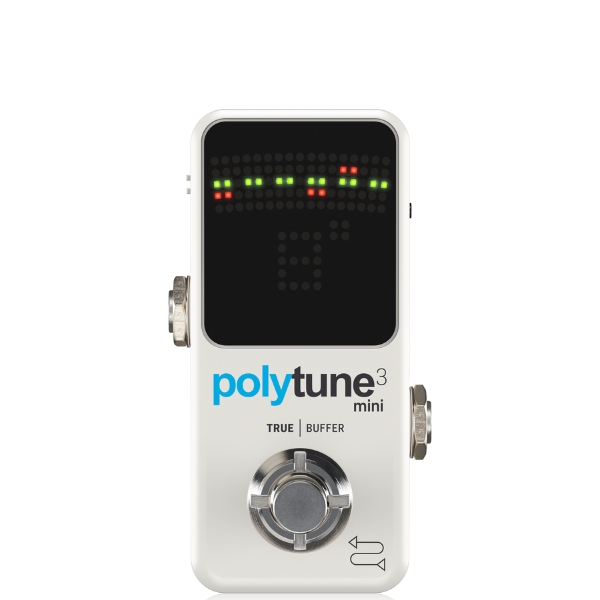
With it's small size, excellent tuning accuracy, and its polyphonic ability to see all your strings' tuning at once, the TC Electronic PolyTune 3 Mini is a brilliant option for any guitar player.

No list of guitar tuners would be complete without the Boss TU-3. Seen on countless pro guitarists' pedalboards, the rugged build and reliability of the TU-3 make it a great choice.
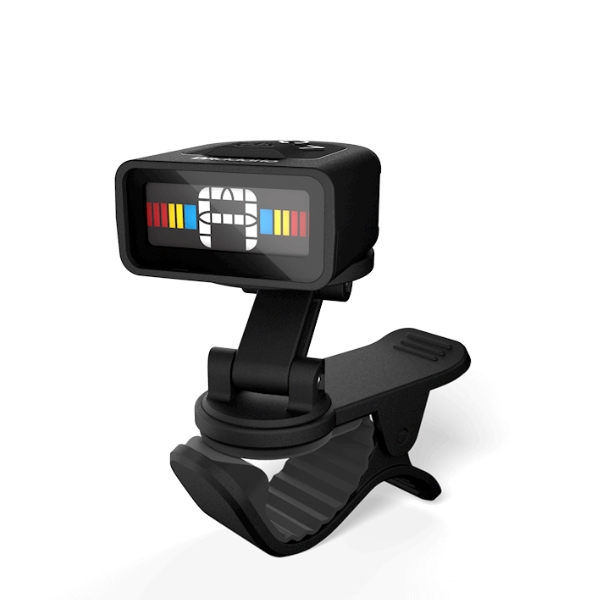
With its discreet yet flexible design that will fit a wide variety of guitars, light weight, and ultra-bright display the D'Addario NS Micro Universal is one of our favorite clip-on tuners.
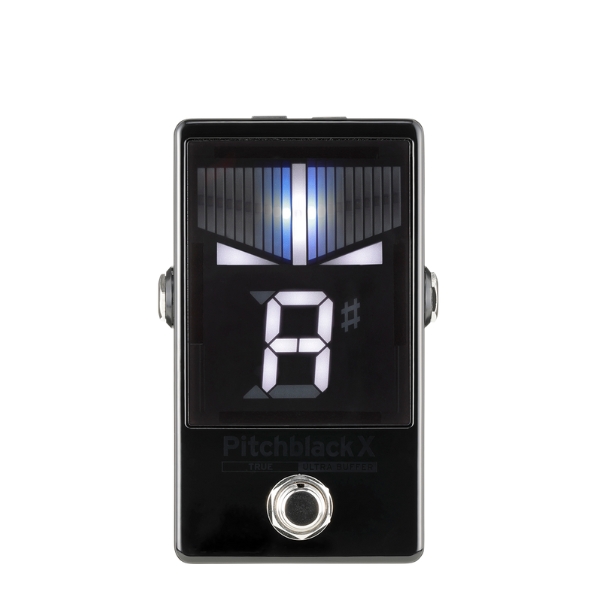
For bassists, and especially those playing 5-string bass, some tuners won't cut it when you tune that low string. You'll find no such issues with the awesome Korg Pitchblack X however.
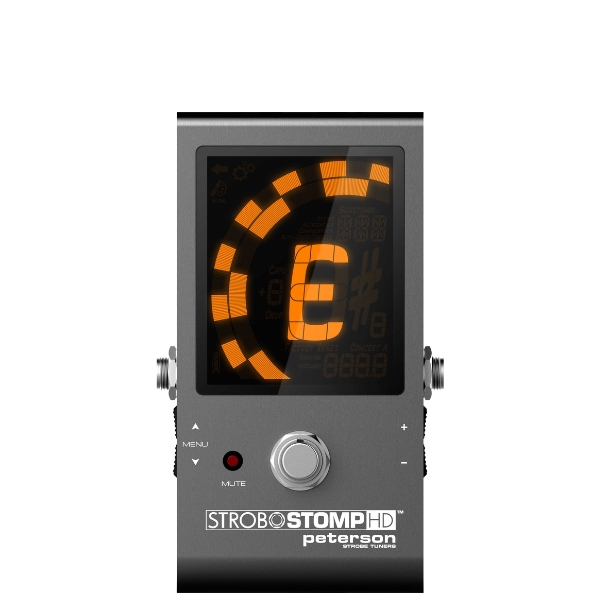
The Peterson StroboStomp HD has quickly become a favorite of pro guitarists and guitar techs, mixing compact size with a huge feature set. It's also one of the most accurate tuners around.
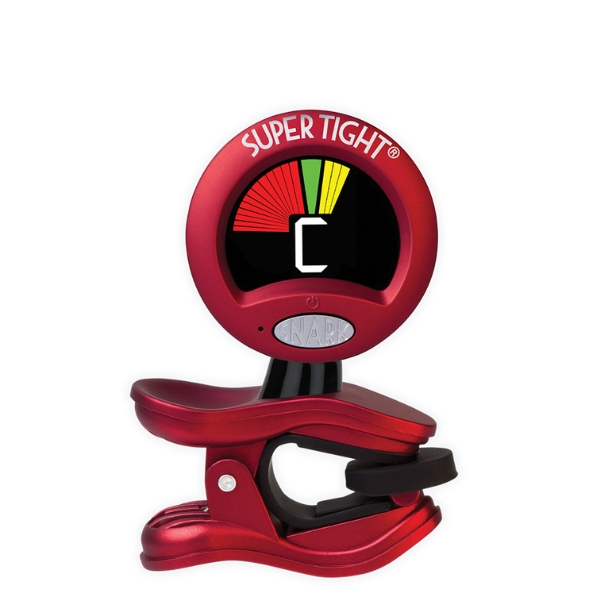
If you're looking for your first tuner then a clip-on is definitely the way to go. The Snark ST-2 Super Tight is absolutely insane value for money, and super accurate too.
Best overall
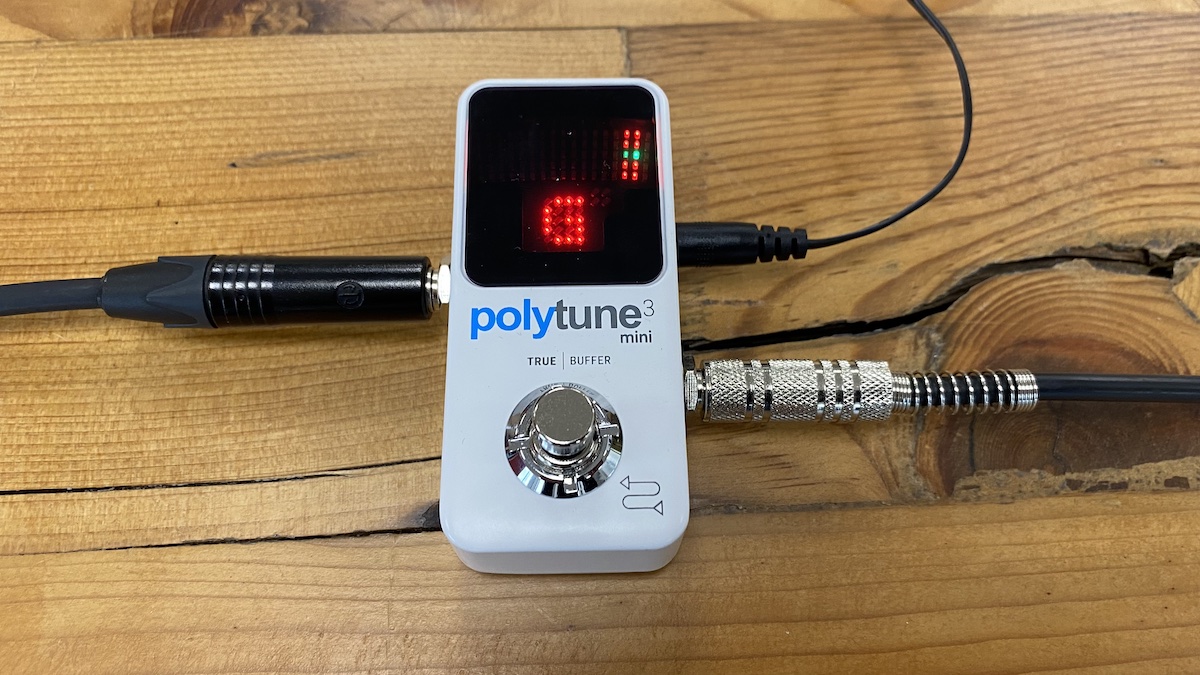
Specifications
Reasons to buy
Reasons to avoid
✅ Buy if you want the future of guitar tuning: polyphonic tuning is the name of the game with this fantastic pedal, which means you can see all of your strings' tuning at the same time and adjust as necessary.
❌ Avoid if you have big feet: Due to this small size, it's not the best for those who have large feet or like to wear boots when they play.
TC Electronic's PolyTune 3 Mini could be the best guitar tuner for you if you’d rather devote pedalboard space to cool, creative effects. During testing, we were thoroughly impressed by what the Mini is capable of - and the tuning accuracy is spot on.
Polyphonic functionality is part and parcel of the PolyTune line – and the dinky display’s 109 LEDs do a good job of clearly conveying the potentially complicated view of your guitar’s full six-string tuning.
Ever play slide guitar? Fretless? Long emotive string bends? Use the Mini’s handy always-on function to guide your pitching. And, with both buffered and true bypass modes, you can be sure there’s a place for the PolyTune anywhere in your signal chain.
Read the full TC Electronic PolyTune 3 Mini review
Best pedal tuner

2. Boss TU-3 Guitar Tuner
Our expert review:
Specifications
Reasons to buy
Reasons to avoid
✅ Buy if you need to play live: Appearing on countless professional pedalboards, the Boss TU-3 is legendary for its rugged build and long-lasting performance.
❌ Avoid if you prefer true bypass: This pedal has a buffered bypass, which means it affects the signal of your guitar as it passes through.
An evolution on Boss’ top-selling industry-standard TU-2, the TU-3 now features drop tuning functionality, improved tuning accuracy, and ‘Accu-Pitch’ verification to confirm you’ve tuned successfully. All good stuff, and you can add to that the TU-3’s brighter screen for cutting through bright sunlight. Perfect for busking!
Still an industry standard, Boss’ ever-present rock-solid build quality is evident. You may find other pedals do more for your money, however. We'd argue, though, that there's only so much anyone wants their tuner to do - and tune effectively and efficiently is probably pretty high up on the priority list.
Boss offers only buffered bypass mode in the TU-3 which some players will love, others will hate, and many won't notice the difference. If you really need a true-bypass Boss tuner, you’re looking at the TU-3W ‘Waza Craft’ edition. At $50 extra, though, you do pay a premium.
Best clip-on tuner

3. D'Addario NS Micro Universal
Our expert review:
Specifications
Reasons to buy
Reasons to avoid
✅ Buy if you want a discreet clip-on tuner: The small size and light weight of this tuner means you'll hardly notice it's there.
❌ Avoid if you struggle with small text: The small screen could be difficult for some to read if you struggle with small text at a distance.
There are so many great clip on tuners available at the moment, but for us, the D’Addario NS Micro Universal is one of the best out there. Combining flexible fitment with a lightweight and sleek design, it’s our top pick when it comes to the best clip-on guitar tuners.
The ratchet clip combined with a 360-degree swivel head makes it one of the most flexible clip-on tuners we’ve ever used, fitting onto a huge variety of guitar headstock designs. The sleek design means it doesn’t get in the way of your playing, and the light weight makes it feel as though nothing is hanging off your headstock.
The display is very bright and with four viewing angles, you’re unlikely to lose sight of it on a dark stage. It is on the smaller side though, so if you struggle reading small text far away, that could prove an issue here. All-in-all, we found it very hard to find anything to hate about this compact clip-on guitar tuner.
Best for bass
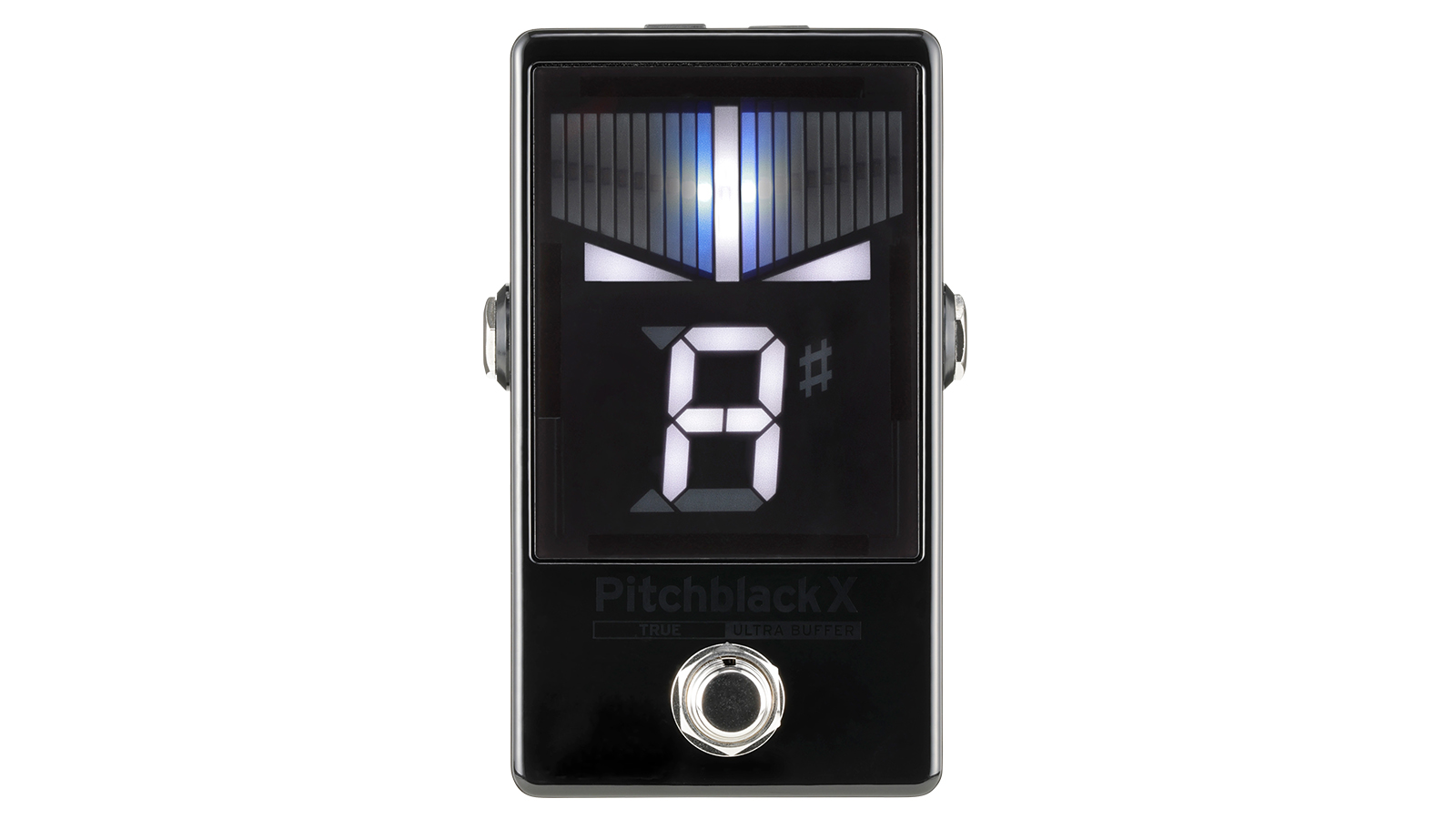
Specifications
Reasons to buy
Reasons to avoid
✅ Buy if you need to tune bass or extended-range guitars: The Pitchblack X works really well with any instrument, but we loved its performance in the lower registers.
❌ Avoid if you want polyphonic tuning: Despite having a range of features, it doesn't have a polyphonic mode which may put some guitarists off.
The Pitchblack X Pedal Tuner is Korg’s next-gen stompbox tuner, a pedal that boasts many new features, yet has become even easier to use. Not that the previous version required MENSA membership!
Korg is particularly proud that the Pitchblack X now features its newly developed Ultra Buffer technology, as well as true bypass. Continue to choose true bypass for unadulterated tone when you’re using a rig with short cable runs and just a few I/O points. If, however, you’re using passive pickups with a rig that has a longer reach of cables, or multiple pedal instances, then you’re better off switching to Ultra Buffer. This will boost your signal slightly to avoid loss of tone, even when the Pitchblack X is switched off.
More LEDs have been added for higher visibility on brightly lit stages, and Korg has introduced ‘just-right tuning’ which is a fancy way of saying that both arrows blink when tuning is correct. Accuracy is a jaw-dropping +/- 0.1 cents, so you’ll be putting those blinking arrows through their paces.
There are four meter display modes to choose from. The regular mode features a central, stationary LED together with a second LED that moves as you alter the pitch of a string. When the two coincide and the arrows start blinking then you’re perfectly in tune. ‘Strobe’ and ‘half strobe’ indicate changes in pitch by the direction and speed of the LEDs. Make them grind to a halt and you’ll be in tune. Finally, the ‘mirror’ mode uses moving LEDs on the left and right of centre that converge as your guitar string becomes progressively more in tune.
The Korg Pitchblack X Pedal Tuner can run on a 9V battery or an external power supply. Incidentally, if you don’t warm to its form factor then there are three other Pitchblack models to choose from: the rackmount 1U Pitchblack X Pro, the compact Pitchblack XS, and the tiny Pitchblack X mini.
Read the full Korg Pitchblack X review
Best for intonation

5. Peterson StroboStomp HD
Our expert review:
Specifications
Reasons to buy
Reasons to avoid
✅ Buy if you value accuracy: Great for guitar setups, the Strobostomp is supremely accurate which makes it great for adjusting intonation and ensuring the best possible sound.
❌ Avoid if you're on a budget: Packed with such extensive technology and features, it's an expensive option that may put off guitarists on a budget.
Famed for their accuracy, Peterson strobe tuners have long been the choice of pros seeking the highest quality gear, and in 2019 Peterson unveiled what it considers to be ‘the ultimate pedal guitar tuner’: the StroboStomp HD.
Boasting a feature set far beyond most of its rivals, you’ll find both true and buffered bypass modes, plus 135 ‘sweetened’ tunings – micro-adjusted reference pitch points optimised for a variety of instrument types and altered tunings. If you notice some of your chords sound a little off at different places on the fretboard, and you've checked your intonation, then these sweetened tunings help you get the very best out of your instrument.
One feature we loved especially is the ability to save your own presets - making those tuning changes at shows so much easier. Of course, this level of nerd-ish tweakery can only be employed by the most precise tuners, and the StroboStomp HD delivers 0.1 cent accuracy. That’s plenty enough for the most discerning of ears.
Best for beginners
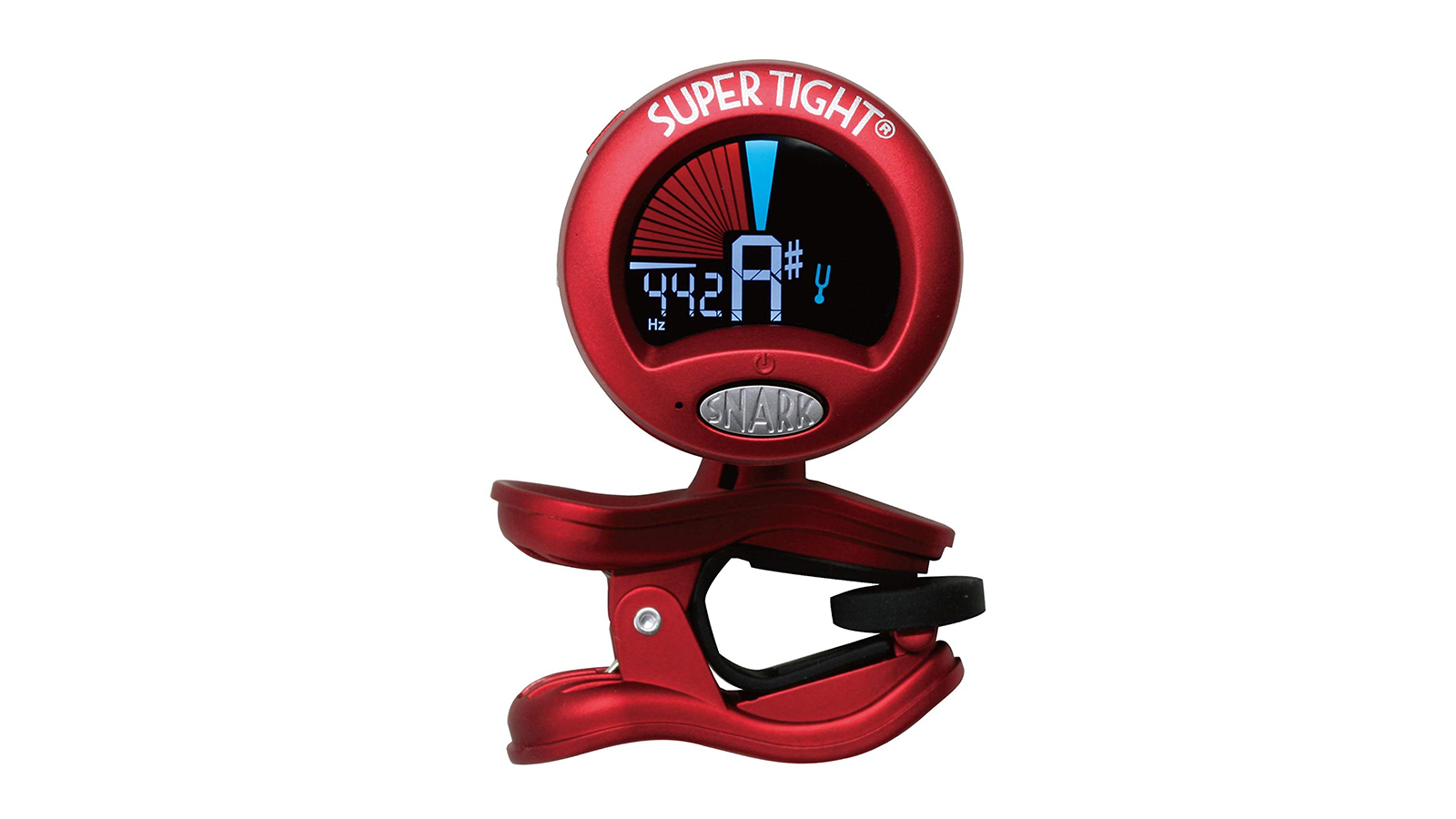
6. Snark ST-2 Super Tight Guitar Tuner
Our expert review:
Specifications
Reasons to buy
Reasons to avoid
✅ Buy if you want your first guitar tuner: Easy to use and inexpensive, the Snark is the perfect first tuner for any guitarist.
❌ Avoid if you're tuning in noisy environments: Clip-on tuners aren't quite as accurate as pedal tuners, as they work via vibration, so you might not always get a true representation in noisy places.
At this small price, it’s worth having an ST-2 around even if you only keep it in a gigbag. Definitely the best guitar tuner for those on a budget. Though there are several pricier and fully featured guitar tuners here, Snark’s ST-2 is aimed at the player who wants just the bare essentials.
First of all, the attachment system is robust and the screen is easily angled – a surprisingly important feature because these types of tuners have to fit in around tuning machines on six-string guitars, 12-strings, mandolins, basses… you get the idea!
Secondly, the ST-2 tracks quickly. Set it to the vibration sensor and it’ll work just fine in all but the loudest of gigs. The microphone is for acoustic instruments, of course, so you’ll need some peace and quiet at home to use this mode. All-in-all you can't knock the ST-2 considering the price point, perfect for beginner guitarists or those on a shoestring budget.
More options...
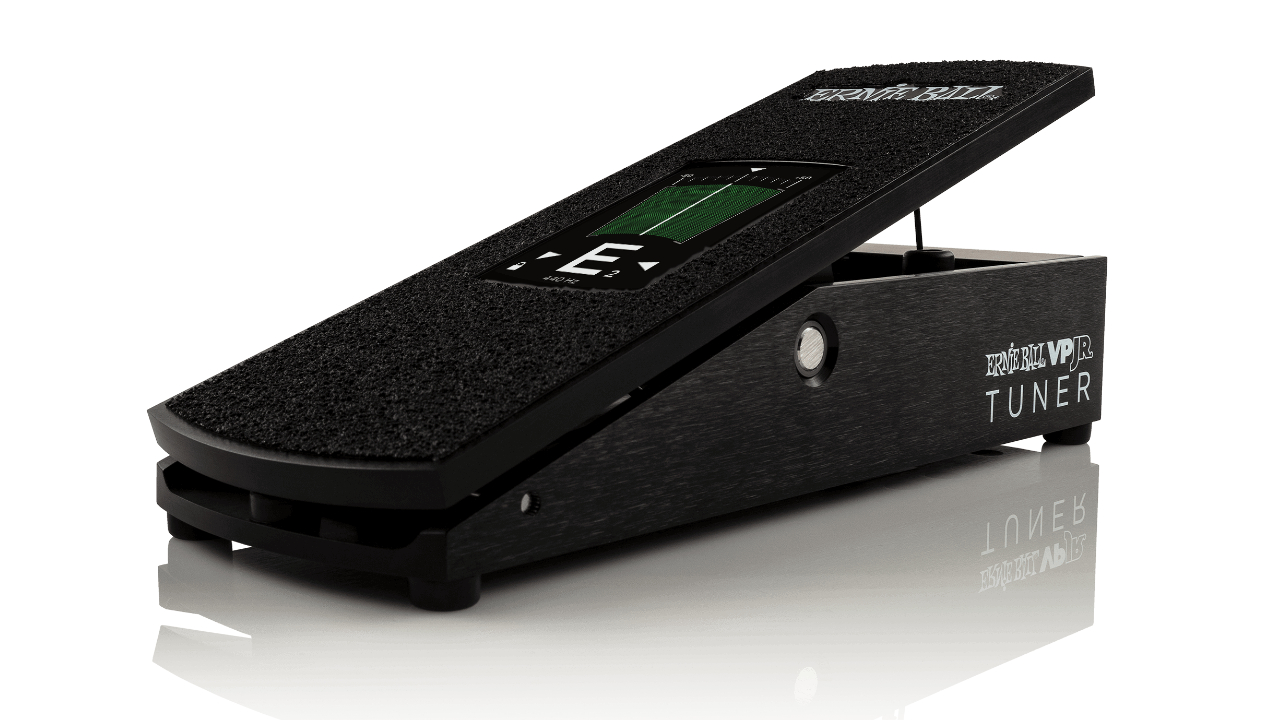
Specifications
Reasons to buy
Reasons to avoid
✅ Buy if you want to save pedalboard space: Combining a guitar tuner and a volume pedal in one unit, the VPJR helps you save on critical pedal space, meaning more room for another drive pedal!
❌ Avoid if you're on a budget: Although it combines two pedals in one, it is a very expensive proposition indeed.
You’re probably thinking we’ve lost the plot here by including a volume pedal in this guide, but please let us explain. Ernie Ball’s expression pedal-based delays and overdrives have been a popular choice for guitarists worldwide, and now they’ve incorporated the most important pedal of them all.
The VJPR is a two-in-one pedal that combines a volume display and an onboard digital chromatic tuner on a crystal-clear display screen integrated into the pedal’s footboard. In ‘volume + tuning’ mode, wind the pedal all the way to the heel-down position (no signal) and the tuner engages, and as you increase the signal, a volume readout will appear. Ernie Ball has also provided ‘volume only’ and ‘tuner only’ modes, for those who like to keep things a bit more simple. We found these super useful during testing, as getting used to any new tech can be a challenge.
The tuner can not only be calibrated to a whole range of different pitches but can be used as a master volume or gain control on your rig. The pedal sits in an ultra-durable aluminum housing that features a Kevlar cord to ensure even tension throughout the foot sweep. Input-wise, the mono input jack can handle both passive and active signals, with up to 18V of headroom. This makes the VJPR perfect for passive and active guitars and basses.
Read the full Ernie Ball VPJR Tuner review
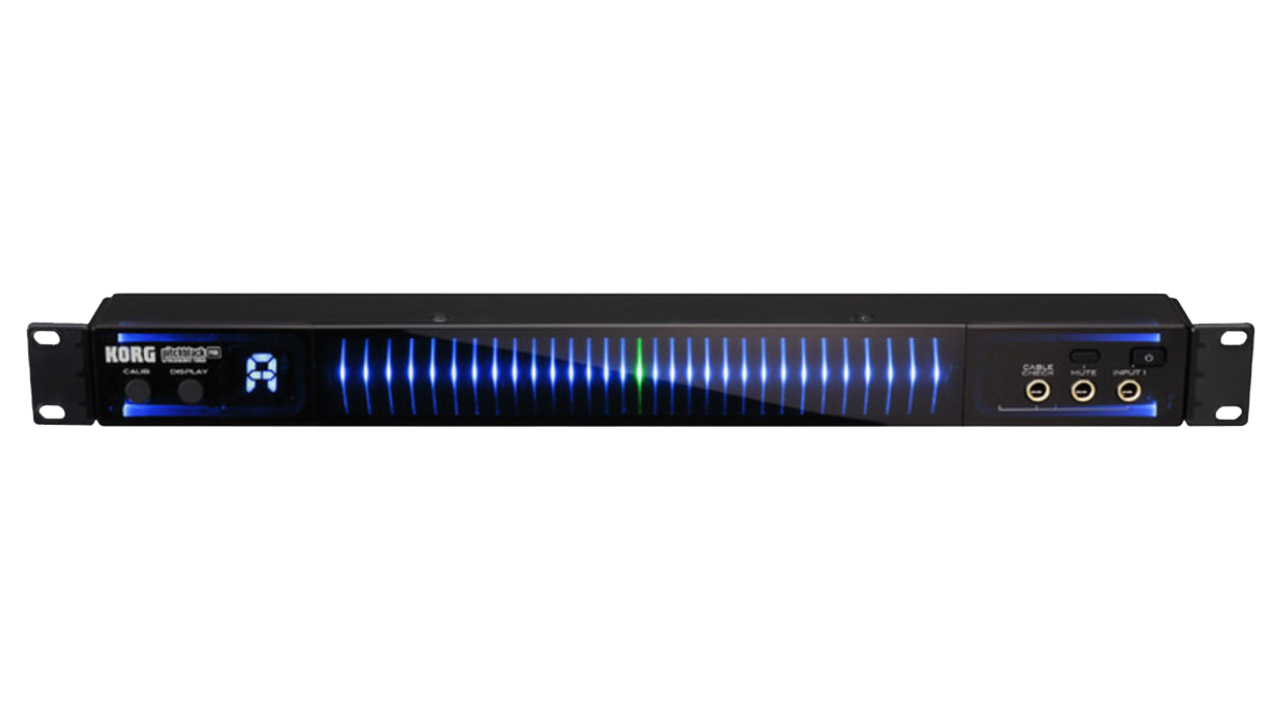
8. Korg Pitchblack X Pro rackmount tuner
Our expert review:
Specifications
Reasons to buy
Reasons to avoid
✅ Buy if you need a touring-grade tuner: The Korg Pitchblack X Pro is designed for professional-level guitarists who need a robust rackmount solution.
❌ Avoid if you're playing smaller venues: Unless you're playing large shows, we'd go with a pedalboard-mounted tuner versus a rack-mounted one.
Imagine taking all the good stuff from a Pitchblack X Pedal Tuner and shoving it into a 1U rackmount enclosure. Yes, but why would you want to do that? Visibility and accuracy, that’s why. The Pitchblack X Pro’s massive display makes it so much easier to perform very fine adjustments, which is critical with a tuner as accurate as this.
So, if you’re confined to your studio for most of your guitar-playing life and already use a rack or two to house other equipment then the Pitchblack X Pro is a natural fit. You’ll be able to see it clearly from across the room, and it’ll speed up the process of tuning no end.
What about performance? Wouldn’t it be great to benefit from a super-large display on stage? Absolutely. In fact, with the help of some rack ears, it’s simplicity itself to mount it on a pedalboard.
Another reason Korg super-sized the Pitchblack X is so that it could throw in some extra features. As well as all the regular highlights and innovations – such as true bypass, Ultra Buffer, four meter modes, and incredible accuracy – this version also includes a cable checker and an option to change the hue of the LEDs.
You see, the Pitchblack X Pro is an absolute riot of colour. You can choose one of five different colour types, from a blue to red gradation, green to a red gradation or single-coloured gradations rooted in cyan, green, or blue. Make your selection for maximum visibility, or to match your stage lighting, your guitar, your outfit, or even your lippy. The choice is yours!
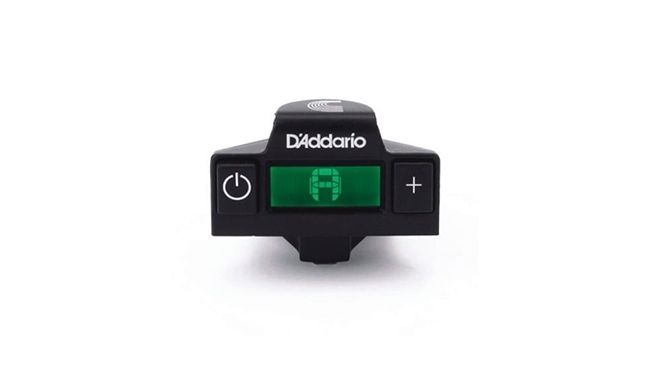
9. D’Addario NS Micro Soundhole Guitar Tuner
Our expert review:
Specifications
Reasons to buy
Reasons to avoid
✅ Buy if you need a discreet acoustic guitar tuner: Able to clip to your soundhole, this tuner is perfect for guitarists who don't want to ruin the looks of their instrument.
❌ Avoid if you don't play acoustic: This won't work on non-acoustic instruments, so not one for the electric guitar players out there.
Designed for acoustic guitars, basses, and ukuleles, D’Addario’s soundhole-mounted tuner is a compact device, offering easy viewing from its bright multi-color display. Hiding discreetly inside your acoustic guitar’s soundhole, the NS Micro won’t spoil the appearance of your pride and joy either. A non-marking attachment enables stress-free installation.
It works by picking up vibrations from your guitar’s soundboard – far more accurate than old-fashioned microphone tuners prone to picking up ambient noise. Sure there are more accurate tuners available, and more expensive ones too. However, as it combines ease of use and a non-intrusive, diminutive form factor, the NS Micro is well worth a look.
Granted, this tuner will only work on acoustic instruments, but if you're looking for something small and infinitely useful to have in your acoustic gigbag, then you can't really go wrong with the NS Micro. Perfect for acoustic guitarists who don't want to spoil the look of their instrument.
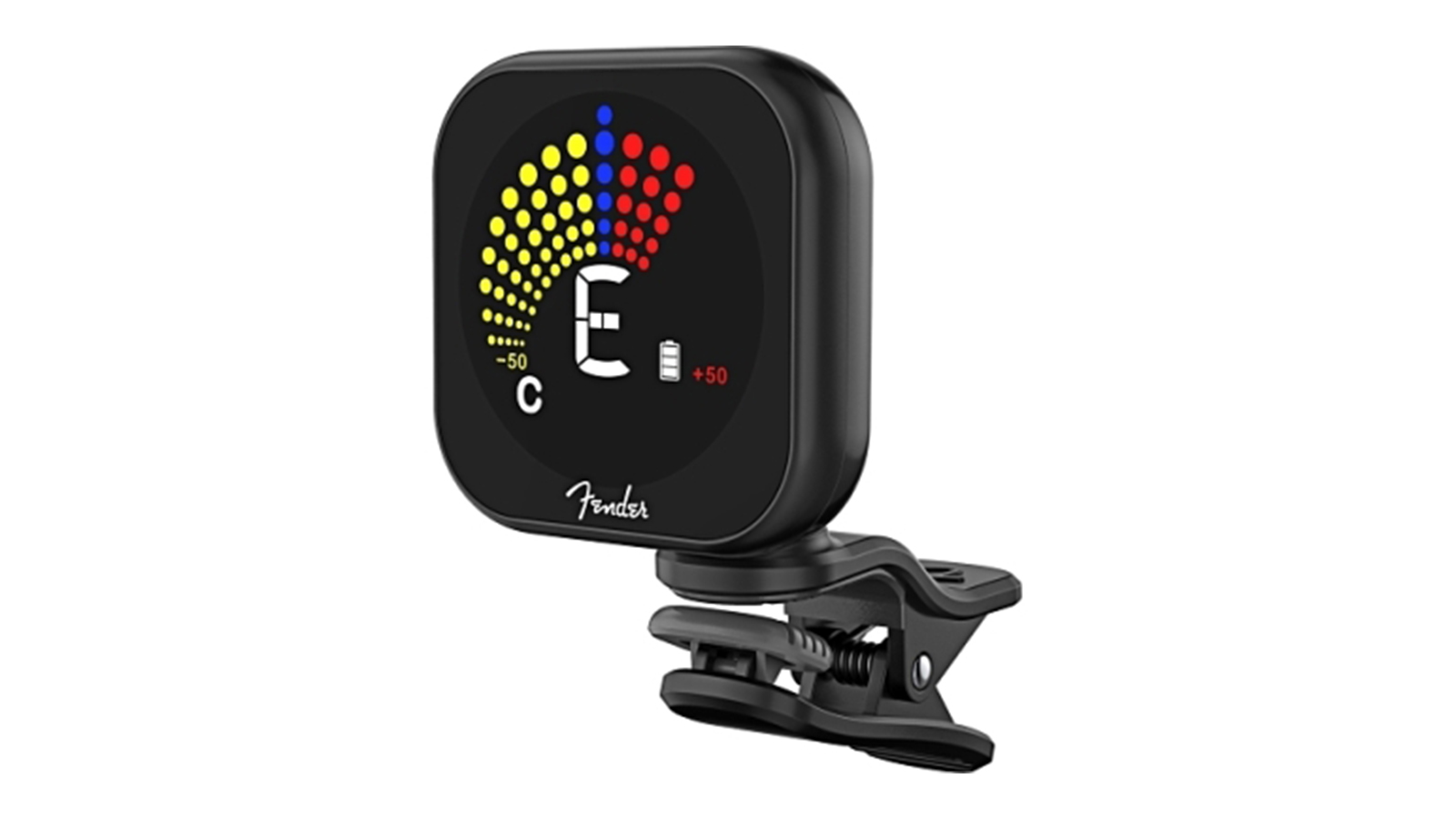
10. Fender Flash 2.0
Our expert review:
Specifications
Reasons to buy
Reasons to avoid
✅ Buy if you need a long-lasting clip-on tuner: Being rechargeable, the Fender Flash gives you reassuring performance as you won't be waiting for it to fail as you do with a traditional battery powered tuner.
❌ Avoid if you need different calibration ranges: This tuner only does A at 440Hz, so if you do need to work in different ranges you should look elsewhere.
It’s a truly stomach-churning experience. You’re just about long enough into your set for the heat of the stage lights to knock your tuning off. So, as you start to move one hand towards your guitar’s headstock you do a double take at your clip-on tuner. It’s dead, completely and utterly unresponsive…
This is why Fender’s Flash Tuner is worth every cent of its minuscule price tag. It’s rechargeable, which is good for your mental stability and great for the planet. Give it a good wallop of power via the included USB cable and it’ll perform alongside you and your guitar for 20 hours. That’s continuous use mind, so the actual figure will be much, much higher because it has an auto shut-off feature that kicks in after five minutes of inactivity. In a nutshell, it’ll keep on partying long after you’ve called it a night.
For a small inexpensive clip-on tuner, it’s surprisingly big on features. The clippy bit boasts two 360° swivels and a 120° hinge, so you’ll always be able to adjust its colourful LED screen so that you can see it.
There are modes for Guitar, Bass, Ukulele, Violin, and Chromatic tuning, plus alternate tuning settings of half step flat, full step flat, and open G, D and E. Perhaps best of all, its screen features a very visible battery indicator, so you’ll never be caught out ever again.
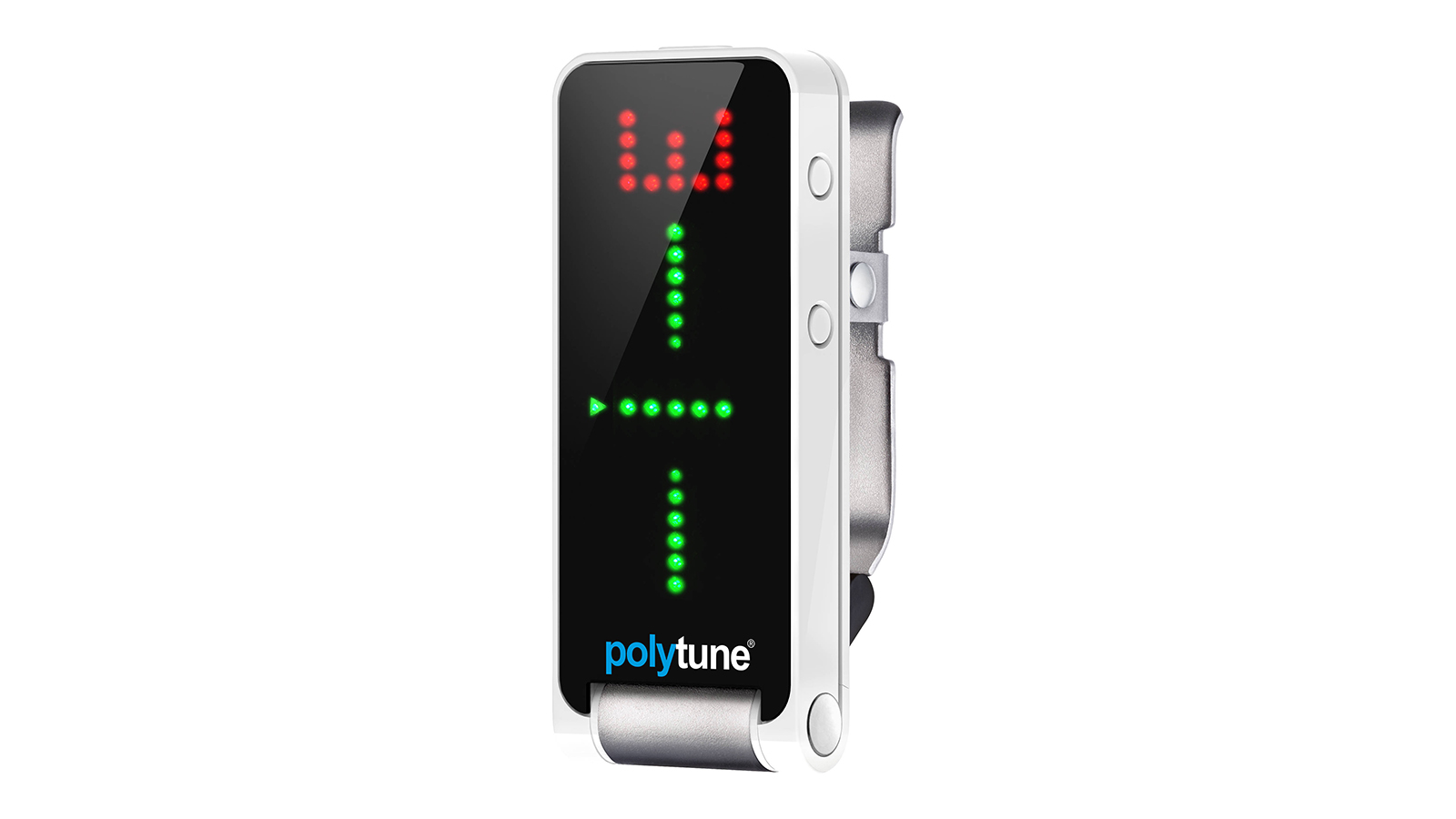
11. TC Electronic PolyTune Clip
Our expert review:
Specifications
Reasons to buy
Reasons to avoid
✅ Buy if you need an accurate clip-on tuner: With its polyphonic functionality and fantastic accuracy, the PolyTune is a superb clip-on tuner for fine-tuning.
❌ Avoid if you're on a budget: If money's a little tight, there are much cheaper clip-on tuners available.
It’s been around since 2015, but TC Electronic’s diminutive clip-on is still a worthy offering, boasting impressive accuracy of a minuscule +/- 0.02-cent strobe-mode accuracy (that’s one 5,000th of a semitone!) and 0.5 cents in chromatic mode.
As its name suggests, the PolyTune Clip is polyphonic but it offers a regular one-note ‘needle’ mode for players who find a six-string display just too much of a light show. We say ‘six-string’... PolyTune Clip is suitable for bass guitars too, albeit only in needle mode. Still, this is a stylish and functional tuner regardless.
It's not exactly cheap as far as clip-on tuners go, but in our testing, we found it outdoes nearly every other clip-on tuner on the market - so if you need a small, convenient, accurate tuner, then this is the one.
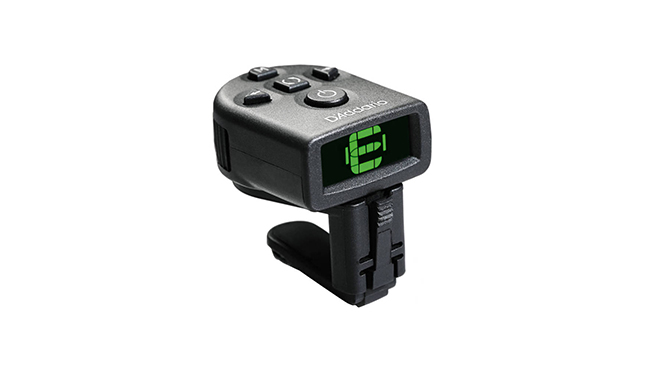
12. D’Addario Micro Headstock Tuner
Our expert review:
Specifications
Reasons to buy
Reasons to avoid
✅ Buy if you need a low-profile headstock tuner: One of a few small tuners from D'Addario, this headstock tuner is designed to leave as small a footprint as possible.
❌ Avoid if you need a large display: The display here is pretty small, so not for those who struggle to read small text at a distance.
Much like D’Addario’s soundhole-mounted offering, the Micro Headstock Tuner is a small un-intrusive device. It’s lightweight too – ideal for maintaining your instrument’s balance. If you really want a clip-on tuner but find they weigh too heavy on your headstock, this could be the tuner for you.
At 0.3 cents, this is one of the most accurate models in our best guitar tuners list. That’s an impressive feat considering it’s also one of the cheapest here. It can also stay on your guitar while it's in transit, removing the chance of you rocking up to a show having forgotten your tuner.
Sure the display is a simple chromatic layout, with none of the strobe style offerings of the more expensive models here, but this is all about wallet-friendly simplicity. There aren't many tuners with as small a profile as the Micro Headstock Tuner, which makes it a great choice for guitarists who want to maintain the look and balance of their guitars.
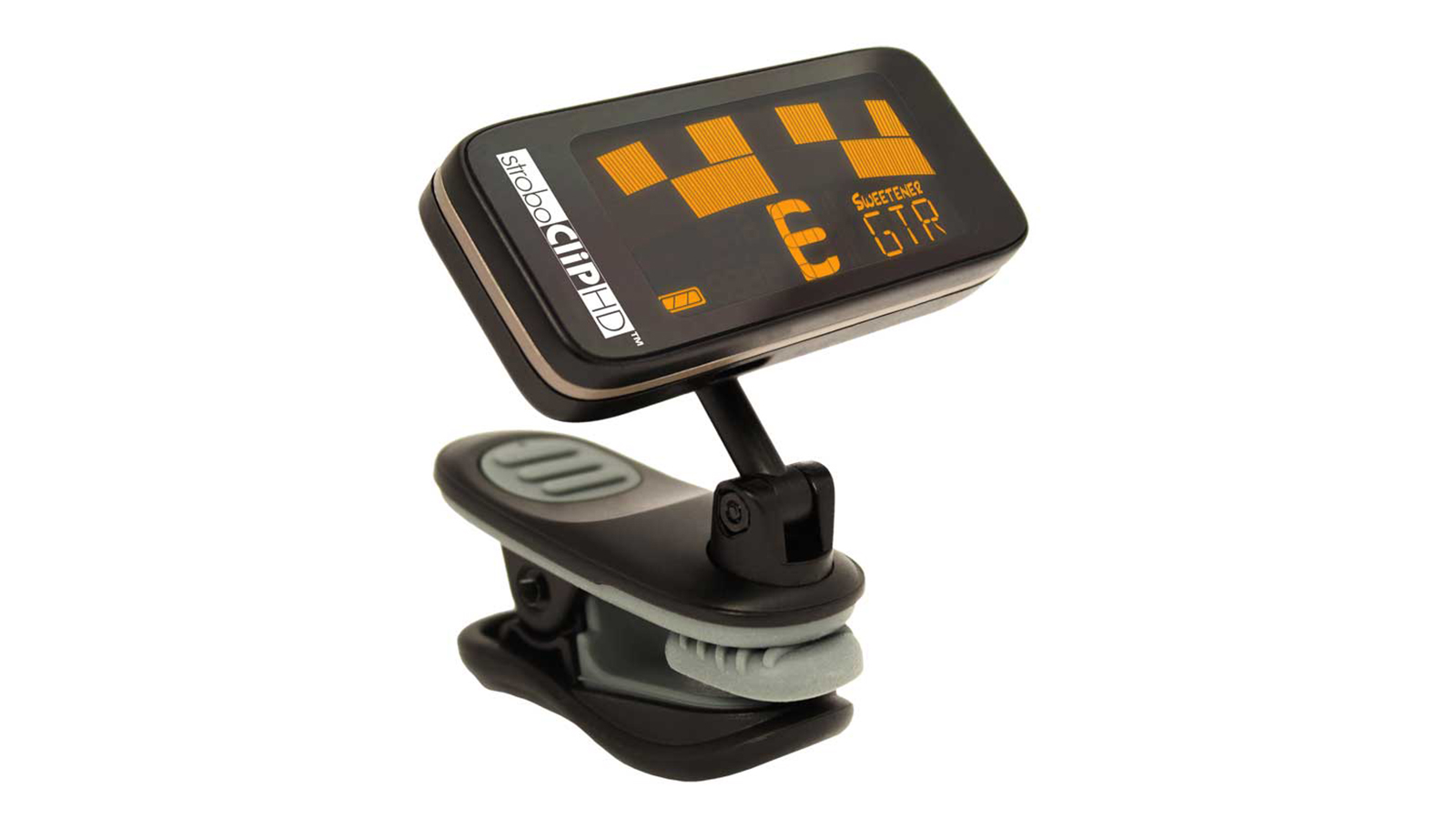
13. Peterson StroboClip HD
Our expert review:
Specifications
Reasons to buy
Reasons to avoid
✅ Buy if you need a feature-rich clip-on tuner: With superb accuracy and sweetened tunings, this is one of the best clip-on tuners money can buy.
❌ Avoid if you're on a budget: All these features don't come cheap, making this one of the most expensive clip-on tuners we've ever come across.
As the name suggests, the Stroboclip HD offers the accuracy of a stompbox strobe tuner but in a much smaller package that’s ready to be clipped to the headstock of your guitar. Or many other instruments for that matter.
Accuracy is an astonishing 0.01 cent, and tuning is as easy as adjusting your guitar’s tuning pegs until the animated strobe disk stops spinning. Peterson claims that this method of tuning is quite literally ‘spot-on’, and far more accurate than the animated arrows or flashing lights found in other tuners.
It goes without saying that being in tune is always a good thing, but the accuracy of the StroboClip HD enables you to experiment with ‘sweetened tunings’ too. It ships with a library of 50 sweetened tunings for a variety of instruments from banjos to brass including, of course, guitar.
Despite its tiny size, the StroboClip HD’s LCD screen is easily seen in the gloom of a poorly lit stage and even remains perfectly visible in direct sunlight. If you own a bass as well as a guitar or two, you’ll be delighted to learn that it’s one of the few clip-on tuners that’ll recognize the low E string without any issues whatsoever.
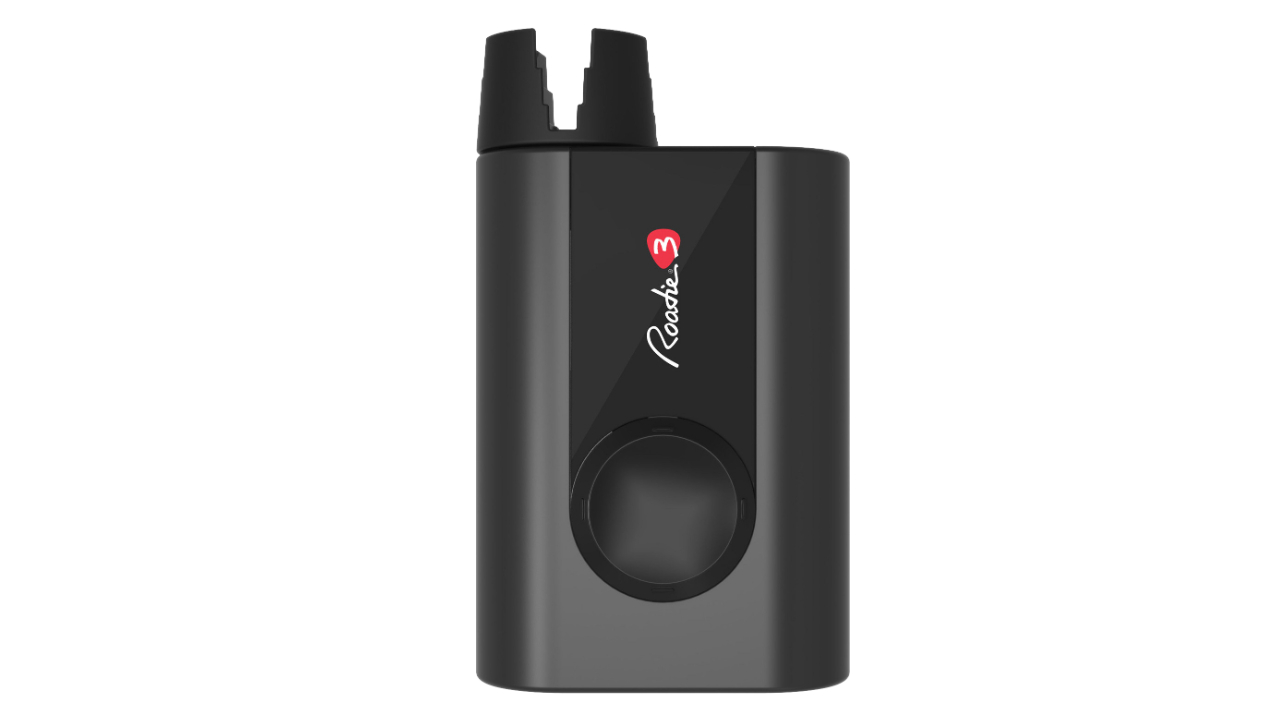
Specifications
Reasons to buy
Reasons to avoid
✅ Buy if you want a tuner that does the hard work for you: This tuner winds your strings for you, which means no more endless twisting of tuning machines when changing strings.
❌ Avoid if you play bass: This version doesn't work on bass guitar, which means you'll need to buy a separate version to fit the larger tuning machines.
Whereas the market is flooded with pedals, automatic motorized tuners are few and far between. Using its vibration sensor, the Roadie 3 detects the pitch of a string and then adjusts it to a preselected note. Just stick it on a machine head and the tuner does the winding for you, at up to 120rpm.
Roadie 3 also has an integrated metronome to help you nail your timings, and an improved peg connector means it’ll fit even more instruments. Working on the majority of guitars, it can also tune banjos, acoustic guitars, and even ukuleles. It may be disconcerting to let a machine do the tuning for you, but it works incredibly well.
Not enough to tempt you? Well, consider that Roadie 3 comes equipped with over 100 built-in tuning presets. DADGAD? Sure! Capo tunings? You bet!! Simply access them via the onboard LED screen. For expanded editing features you’ll need the free Roadie 3 app.
Read the full Roadie 3 Automatic Guitar Tuner review
Buying advice

What types of guitar tuners are there?
There are three main types of guitar tuner. Once you peel back the marketing hype, the main difference comes down to personal preference:
Chromatic: The first is chromatic. These tuners compare the input signal to one of the 12 notes in the chromatic scale. This means they are limited to only these notes, as well as only tuning one note at a time. For most players, neither of those limitations is likely to be an issue.
Polyphonic: The second type of tuner is polyphonic. Just as with pitch-shifters or synths, 'polyphonic' simply means that the tuner can process multiple notes at once. The downside, of course, is that this is harder to show to the user. They can be incredibly useful live, however, as you can strike all the strings to see if everything lights up green.
Strobe: The final type of tuner is the strobe tuner. Unlike the chromatic tuner, the strobe tuner can be set to custom frequencies and temperaments. This is very useful for players that play music outside of standard Western scales. It can also be useful for experimenting with different pitch standards, like basing around 432Hz instead of 440Hz. Though this sounds esoteric, Soundgarden's smash Black Hole Sun used 432Hz and many artists favor the standard. Strobe tuners are typically the most expensive and specialist of the three.
Generally speaking, although it's a matter of taste, you can't go wrong with a chromatic tuner as long as you're working within standard Western scales.
Pedal vs clip-on vs microphone tuners - which is better?
Form-factor-wise, there are again three main types. Although some bass and uke-specific models exist, there should be no issues switching between instruments.
Microphone tuner (free-$/£10): As these small, usually cheap tuners use a microphone for their input, they're flexible in terms of what source they can take. Great if you need to tune up many stringed instruments - but the trade-off is that they're susceptible to interference from background noise. When we were coming up, these were usually dedicated hardware boxes, but nowadays, they're just as likely to be an app on your phone.
Clip-on ($/£5-30): Clip-on guitar tuners attach to the headstock of the instrument and work via detecting vibrations. As a result, they can be very efficient in battery use, as well as small. The accuracy of clip-ons like the TC Polytune Clip and Unitune is now good enough that we've seen them used in professional studios, mostly due to their convenience. They can be kept near to hand, or scattered around so there's always a tuner within reach for when that great idea arrives.
Stompbox tuner ($/£50+): The third type is the stompbox. These take a standard 1/4" jack input to operate. This means that they will only work with electric guitars, basses, and ukuleles, or acoustic instruments with a pickup. In terms of signal path, this stompbox should normally go first in your signal chain, as it can be used to mute the guitar when in use. However, due to the use of buffers in many tuners, some players prefer to keep it out of the audio path. There are effect pedals with a dedicated tuner out so you can split your signal into a tuner mid-chain. This generally has been our preference, and means the tuner can be left 'always on.'
Rackmount tuner ($/£100+): The final type of tuner, usually found on professional touring rigs is the rackmount tuner. The main advantage of a rackmount tuner is the increased surface area which means you can get a far more accurate view of your guitar's tuning. The size is also a limitation, however, as it'll take up a lot of room on your pedalboard. If you already have a rackmount setup or you want one for your studio, then the rackmount tuner is the ultimate guitar tuner when it comes to accuracy.
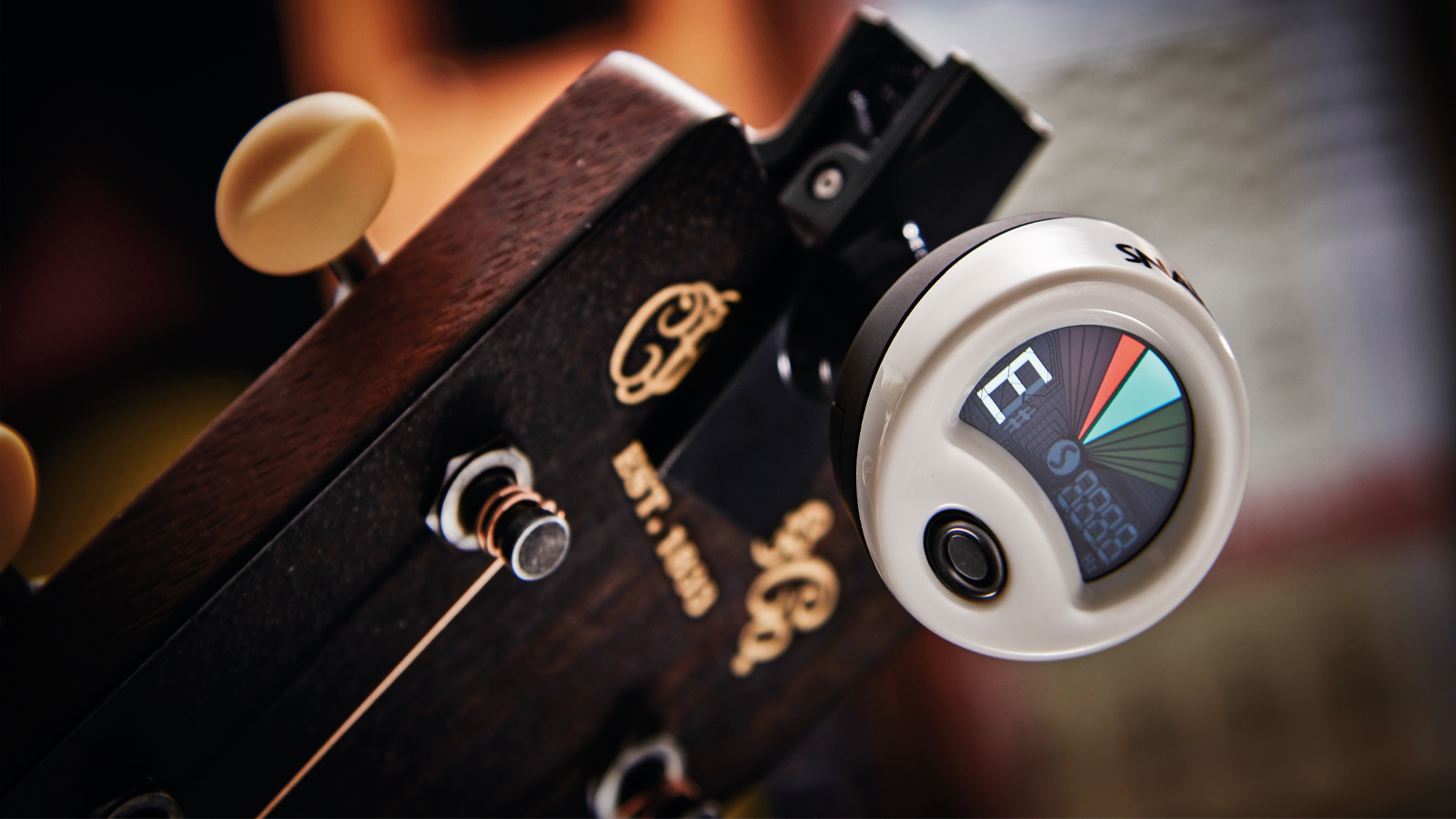
Are guitar tuner apps accurate?
Increasingly, new players are turning to microphone-using apps rather than dedicated hardware tuners. Although they can be useful for tuning an acoustic in a hurry, for practicing or concert use these are insufficient. Background noise and ergonomics mean that the microphone often can't get an accurate input. Besides, having an 'always on' option on the floor is far more reliable when you need it.
Google also recently launched its new browser-based Google Tuner. While you have to strike the strings pretty hard for them to register, it worked consistently in our tests against the Korg chromatic tuner and TC Electronic’s PolyTune app. The main interface is pretty user-friendly, too. Google Tuner would be a useful backup if you ever forgot your hardware tuner or found yourself out of batteries, but we would always advocate owning a dedicated tuner.
What are sweetened tunings?
Because of their accuracy, some strobe tuners enable you to experiment with sweetened tunings. Let’s explain. Most modern Western scales and tuning standards use equal temperament, which means that an octave is equally divided into 12 notes. It works well enough and is mathematically convenient, but it’s not strictly correct. For reasons too complicated to go into here, it’s a compromise.
Similarly, on a stringed instrument such as a guitar, some fretted notes will be very slightly out of tune, even if it’s correctly set up and well intonated. Sweetened tuning attempts to rectify these problems by slightly adjusting the space between each interval. They’ll no longer be equally spaced, but dyads and chords should sound better, or sweeter, in some circumstances.
There is, however, always a trade-off. Although certain chords or harmonies played on a particular section of the neck will sound better, others may sound worse. Tuner developers overcome this by providing scores of sweetened tunings for different instruments, open notes, musical genres, and so on. This enables you to chop and change tunings to best suit the piece you are currently playing.
What does the term A440 refer to?
It seems extraordinary, but Western composers and musicians have only relatively recently agreed on which frequency constitutes a certain pitch. For example, not so long ago in France the note C had a different pitch than the same note C played just across the border in Germany. Consequently, you’ll find that antique flutes from France and Germany are slightly different lengths. In fact, some European cities within the same country adhered to their very own tuning standards, which must have made life for travelling freelance musicians a right pain.
Even in the late 1800s the French were tuning A below middle C to 435Hz, while the English were tuning significantly higher to 452Hz. It was only in 1939 that an international committee finally agreed to set 440Hz as concert pitch, but even that standard wasn’t ratified by the International Organization for Standardization until 1955.
Does any of this really matter? Is it a problem if your guitar tuner is fixed at A=440Hz? For most guitarists probably not. However, if you have any classical pieces in your repertoire that you play within an ensemble, you may find that your fellow musicians prefer to tune to an older, more authentic standard.
The rising popularity of music for meditation and wellness means that another standard is becoming increasingly common too. Many in the New Age fraternity believe that A=432Hz is better cosmically attuned to the universe, so should be used in place of A=440Hz. The upshot of this is that many singing bowls, chimes, and so on are tuned to the 432Hz standard, which makes accompanying them on a guitar tricky unless you can tune down with accuracy.
How we test
A guitar tuner is a simple device really, but that doesn't mean we don't put one fully through its paces when reviewing. A tuner needs to be robust, reliable, and easy to use or it won't make the cut for us.
When we receive a tuner for review, we'll first look at how it's built and what features it has. If it's a clip-on tuner then we'll check that a fits a variety of instrument headstocks, there's a good amount of flexibility in the way you can view the head, as well as whether or not it adds more weight to the headstock.
For pedal tuners, we'll look at the overall feel of it. Does it appear sturdy enough to put up with repeated stomping night after night? Are there any additional features like bypass or buffered switching? We'll also check whether it can run on battery power or if you need an additional pedalboard power supply.
Once our initial assessment is done, we'll plug it in or power it on and get to actually using it. For pedal tuners, we're looking for a bright display with enough sensitivity for fine-tuning. The display is incredibly important as it needs to be easy to read, yet detailed enough for very small tuning increments. For clip-on tuners it's a similar process, they tend to have smaller displays so is it still easily viewable at a distance?
With clip-on tuners it's important to note how they work in noisy environments so to test that, we'll take it to a live show or practice and see how it holds up when a PA system or bass stack is going. With a pedal tuner, we'll be looking to see how easy it is to switch on and off, as well as how easy it is to integrate into an existing pedalboard setup.
Find out more about how we make our recommendations, how we test each of the products in our buyer's guides, and our review policy.
Related buyer's guides
You can trust Guitar World
- Need a do-it-all FX unit? Check out our pick of the best multi-effects pedals
- Get top-notch sound with the best amps for pedals
- Update your board with these killer cheap guitar pedals
- Check out the best Tube Screamer clones
- Beginner guitar gear essentials and accessories
- Meet the best distortion pedals in the world right now
Get The Pick Newsletter
All the latest guitar news, interviews, lessons, reviews, deals and more, direct to your inbox!
Chris has been the Editor of Total Guitar magazine since 2020. Prior to that, he was at the helm of Total Guitar's world-class tab and tuition section for 12 years. He's a former guitar teacher with 35 years playing experience and he holds a degree in Philosophy & Popular Music. Chris has interviewed Brian May three times, Jimmy Page once, and Mark Knopfler zero times – something he desperately hopes to rectify as soon as possible.
- Matt McCrackenJunior Deals Writer
- Simon Fellows
“Add a dash of smokin’ style to your tuning game”: Keef and Clapton fans, rejoice – Tunerette honors the heyday of rock ‘n’ roll with a clip-on tuner that looks like a cigarette
"This is an excellent, compact pedal that helps you tune accurately and quickly": Peterson StroboStomp Mini review











